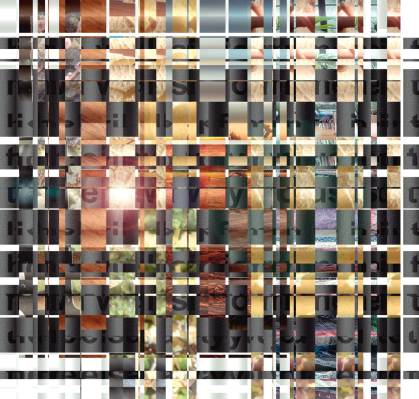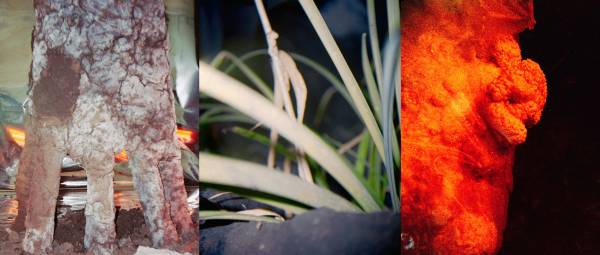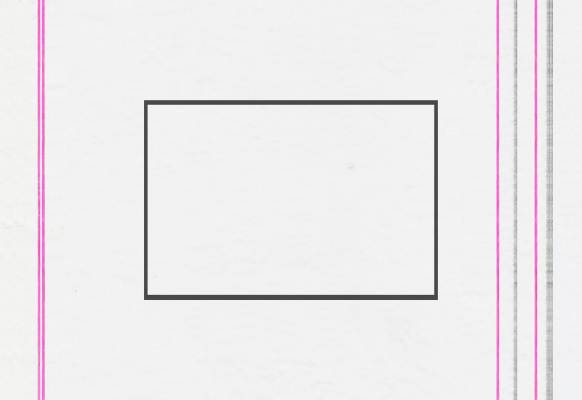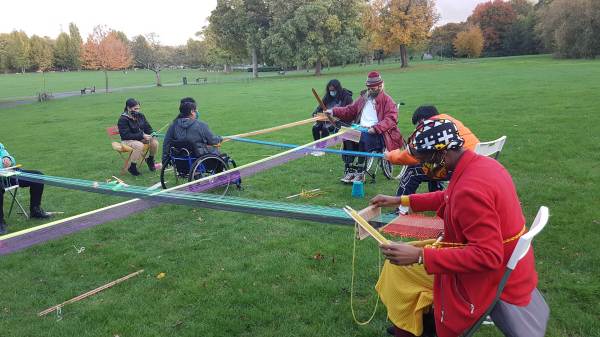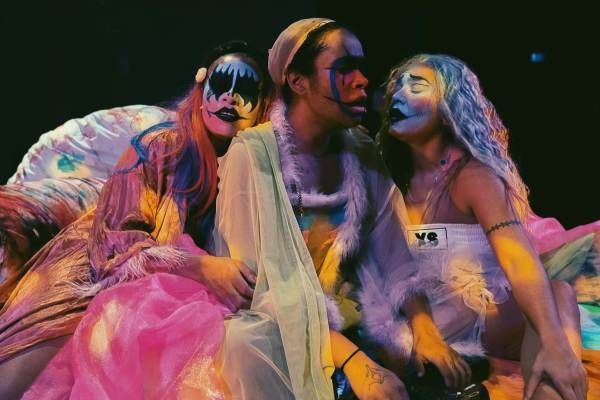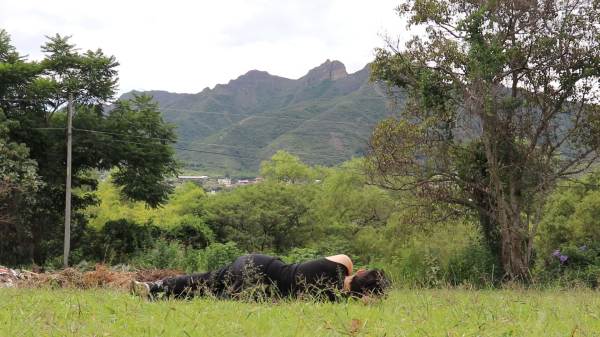Indisposable: Structures of Support After the ADA, Chapter 7
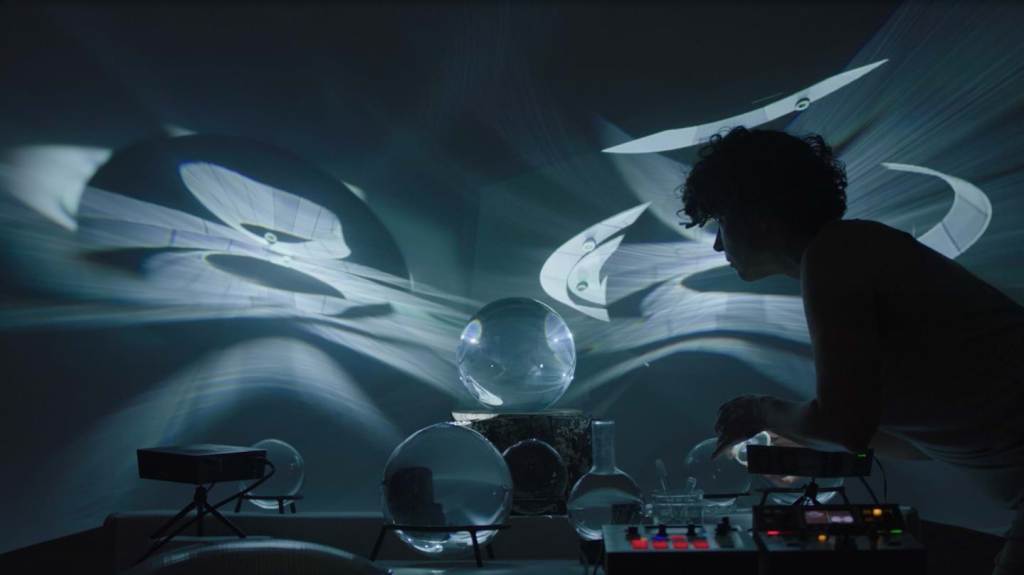
Stitching the Future with Clues by Allison Leigh Holt
Stitching the Future with Clues is an experimental documentary that looks at neurodivergence as a way of knowing, through a cybernetic lens. Combining animated diagrams, video and audio feedback processes, and expanded media techniques, Stitching the Future with Clues draws from Holt’s article “Feedback Structures, Ways of Knowing, and Neurodivergence” (PUBLIC #59), and asks one to consider feedback systems as a medium for understanding the sensing, processing, and exchanging of information happening not just in human minds and brains, but within and between all scales of intelligent life. This film explores the post-humanist sense-making of neurodivergence: differently-attuned to temporal, psychic, and environmental embodied experience.
Text, animation, performance, and editing by Allison Leigh Holt; video synthesis by Kit Young; and sound by electronic musician / producer Thomas Dimuzio.
A post-screening dialogue will take place between artist Allison Leigh Holt, neuroscientist Clifford Saron, PhD, and artist Meredith Tromble who will also facilitate.
About the curators
Jessica A. Cooley and Ann M. Fox have been curatorial collaborators since 2009. Jessica is a scholar-curator currently finishing her dissertation titled Crip Materiality, which forwards a new methodology to address how ableism affects the understanding and valuation of the very fibers of art materials within curatorial and conservation discourses; Ann is a Professor of English at Davidson College in Davidson, NC, with specialties in disability studies in literature and art. They have co-curated two disability-related exhibitions together, RE/FORMATIONS: Disability, Women, and Sculpture and STARING. In addition, both Jessica and Ann have been invited to give national and international talks, hired as consultants to lend their expertise to issues related to disability and art, and contributed to a broad range of other curatorial projects and publications.
About the speakers
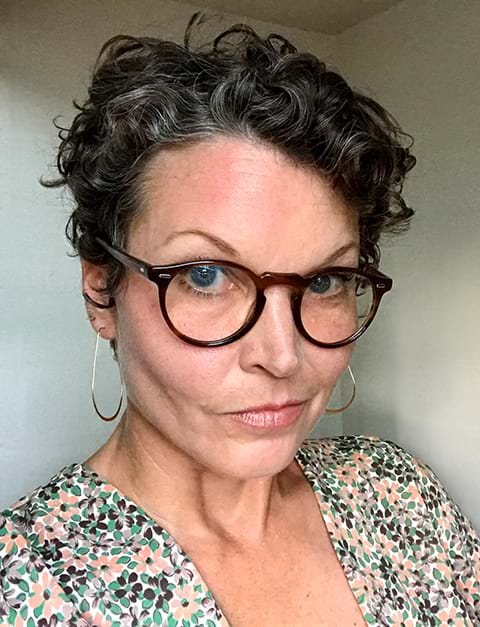
Allison Leigh Holt is a neurodivergent artist / scholar living and working in Oakland, California. Her multidisciplinary research-based work uses techniques of expanded cinema and the Light and Space Movement to model divergent ways of sensing, processing, and exchanging information. Holt is a Fulbright Scholar (Indonesia), and is the recipient of numerous awards from the Djerassi Resident Artist Program (two-time), the Cemeti Institute for Art and Society (Indonesia), the Experimental Television Center (two-time), the North Dakota Museum of Art, and the Santa Barbara Center for Art, Science and Technology, among others. She has been a resident researcher at Sanggar Perbakayun in Sukoharjo, Central Java, and at the Harvard-Smithsonian Center for Astrophysics
Holt’s work has been exhibited internationally at SFMOMA, Stanford University, Anthology Film Archives (NYC), Cemeti Institute for Art + Society (solo, Indonesia), The North Dakota Museum of Art (solo), the Boston Cyberarts Festival, San Francisco Cinematheque, Axiom Gallery for New and Experimental Media (solo, Boston), the Urban Screens Conference (Melbourne), and the Yogyakarta International New Media Festival. She has presented at cellsBUTTON(s) and Video Vortex conferences in Indonesia; the Cultural Studies Association Conference; the 20th Annual Science of Consciousness Conference; Imagining the Universe: Cosmology in Art and Science at Stanford Arts Institute; UN/GREEN: the 2019 Open Fields Conference in Riga, Latvia; After Agency 2019 at Poznan Supercomputing and Networking Center, Mickiewicz University, Poland; and the 2020 College Art Association Conference. At the 47th University of North Dakota Writers Conference, she presented alongside science fiction author Kim Stanley Robinson and theoretical physicist Brian Greene.
Her work has been commissioned by the Ford Foundation Gallery, the David Bermant Foundation, San Francisco Arts Commission, the Zero1 Biennial, Pro Arts Gallery, and Denise Montell Laboratory at UC Santa Barbara, where it is also included in the collection.
Holt has taught interdisciplinary courses as visiting faculty at San Francisco State University, Massachusetts College of Art, as well as numerous arts organizations; and has developed Neurodivergent Media, an experimental media art pedagogy for autistics. She studied at The Evergreen State College (BA) and Massachusetts College of Art (MFA). Her article The Conversation: Feedback Systems, Ways of Knowing, and Neurodivergence is featured in PUBLIC Journal: Interspecies Communication, and serves as the basis for her forthcoming PhD at the University of Edinburgh.
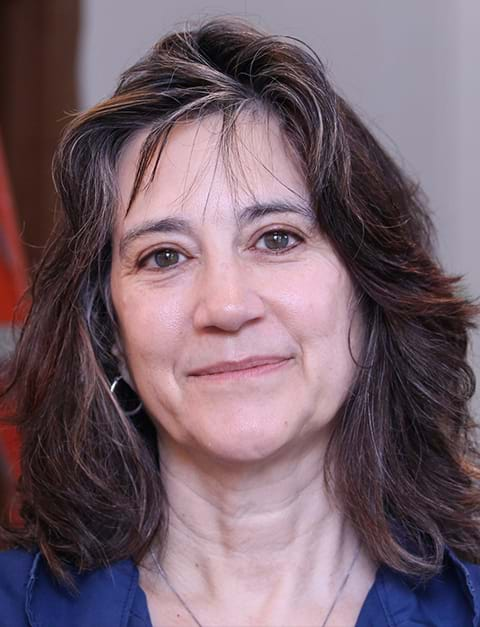
Meredith Tromble is an intermedia artist and writer whose curiosity about links between imagination and knowledge led her to form collaborations with scientists in addition to making installations, drawings, and performances. Since 2011, Tromble has been artist-in-residence at the Complexity Sciences Center directed by physicist Jim Crutchfield at the University of California, Davis, collaborating with geobiologist Dawn Sumner and others. Her work has been widely presented at venues ranging from the Yerba Buena Center for the Arts, San Francisco and National Academy of Sciences, Washington, D.C. to BioBAT Art Space, Brooklyn. She is also the editor of two books, The Routledge Companion to Biology in Art and Architecture, co-edited with Charissa Terranova, and The Art and Films of Lynn Hershman, University of California Press. She is co-editor of the Bloomsbury book series “Biotechne: Interthinking Art, Science, and Design” and a Professor of Interdisciplinary Studies/Art & Technology at the San Francisco Art Institute.
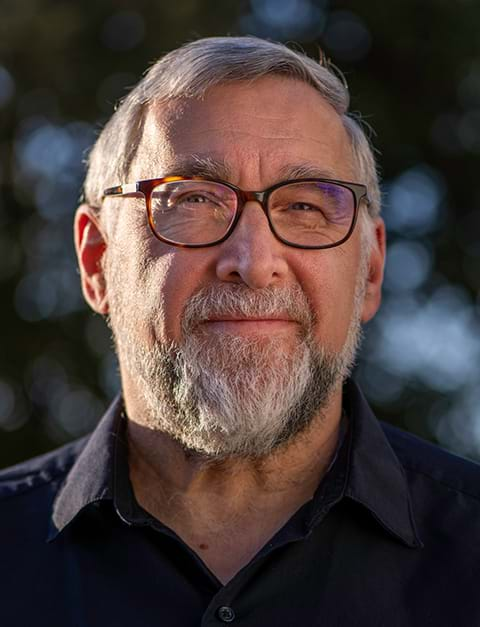
Clifford Saron is a neuroscientist who specializes in training of attention and emotion regulation. He applies electrophysiological and behavioral methods to study sensory and cognitive processes in humans (including those with autism spectrum disorders), and he is a leading scholar of the tangible effects of meditation.
Professor Saron’s research focuses on the training of attention and emotion regulation through contemplative practice. He directs “The Shamatha Project,” the most comprehensive study initiated to investigate the effects of long-term intensive meditation on physiological and psychological processes related to attention, emotion regulation and health. This collaborative, multi-method, interdisciplinary longitudinal study incorporates qualitative, self-reporting, behavioral, electrophysiological and biochemical measures. He also is studying sensory processing, multisensory integration and interhemispheric communication in children who have autism spectrum disorders.
Ford Foundation Gallery
320 E 43rd St, New York, NY 10017
